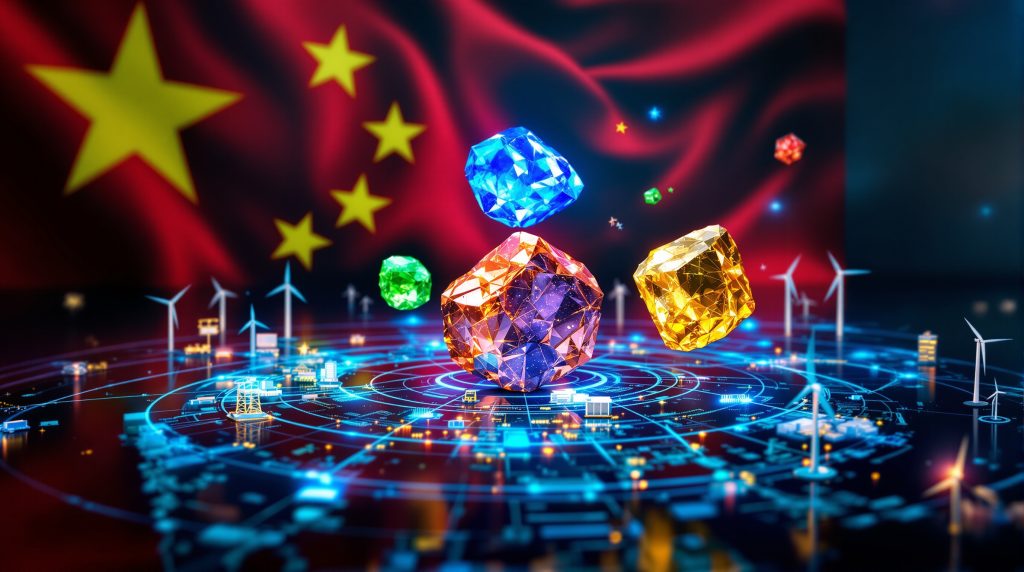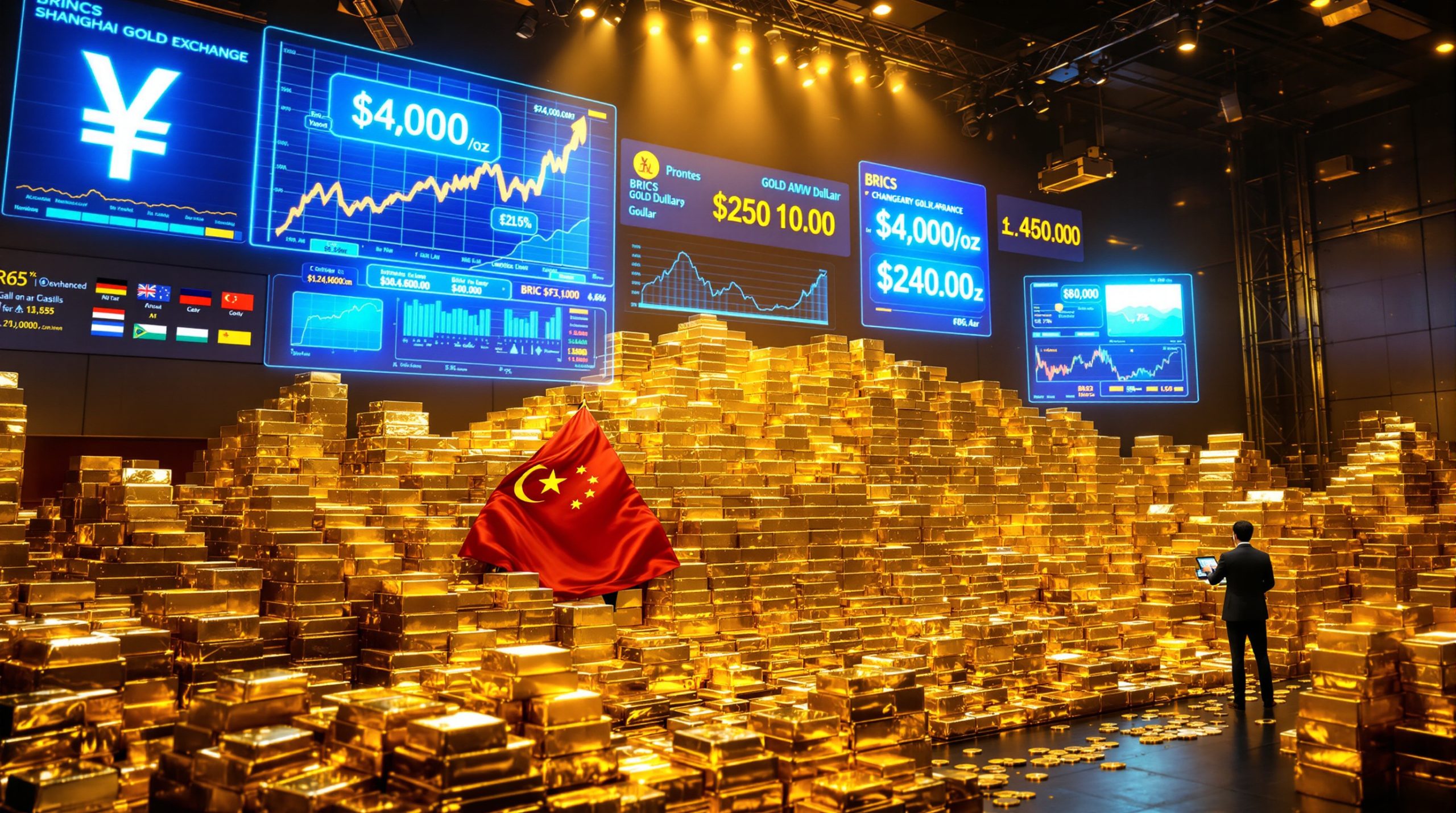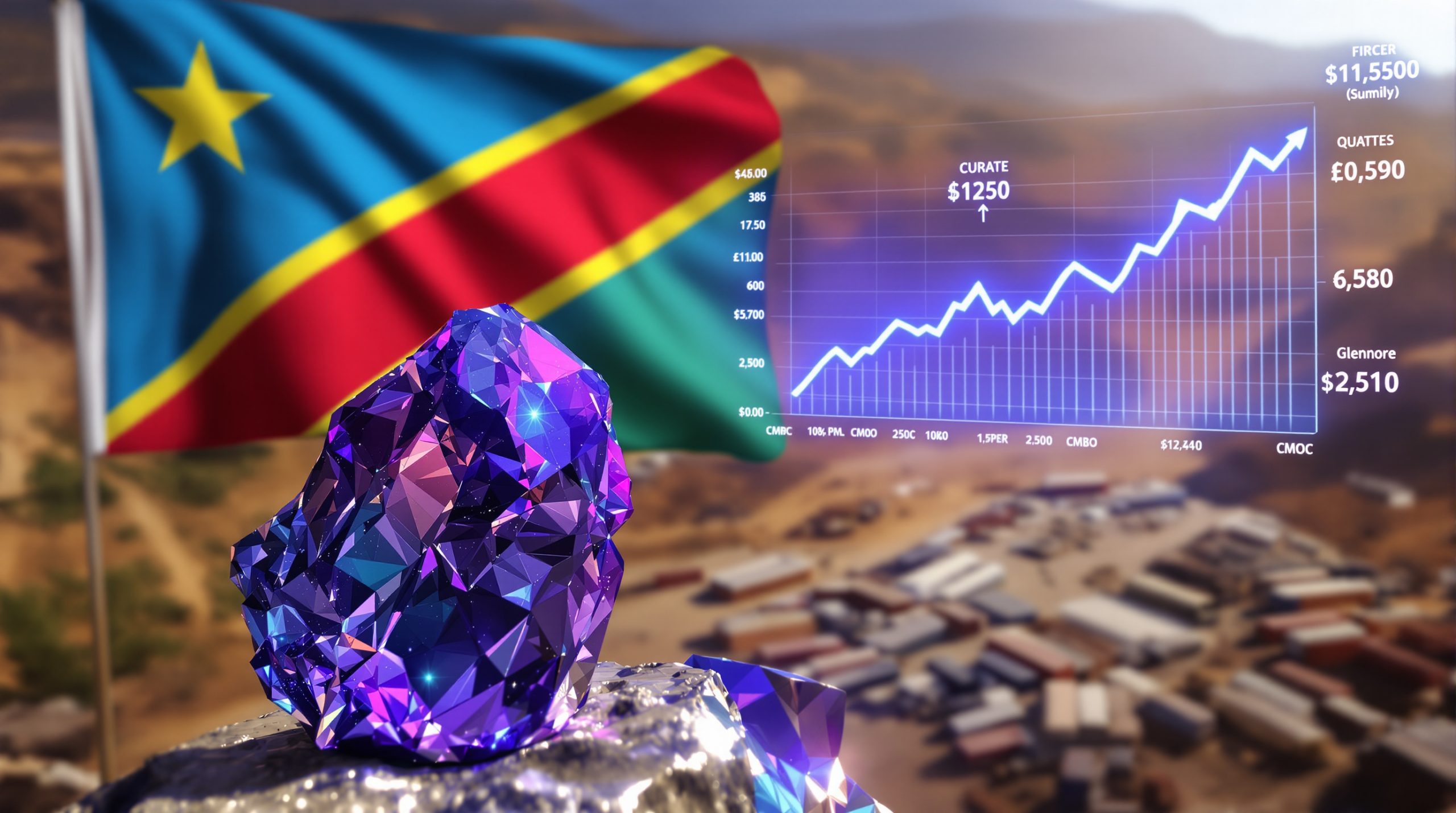China's New Rare Earth Quota Regulations: Global Supply Chain Implications
How Are China's Rare Earth Regulations Changing in 2025?
China has unveiled significant updates to its rare earth regulatory framework, expanding its quota system to now include imported raw materials. These new regulations, finalized in August 2025 after a public consultation period that began in February, represent a strategic move to strengthen China's already formidable control over the global rare earth supply chain. The regulations specifically target the oversight of mining, smelting, and separation processes for these critical minerals energy transition that play an essential role in the global energy transition.
Key Changes to China's Rare Earth Quota System
-
Expanded scope to incorporate imported raw materials into the existing quota framework
-
Enhanced oversight across the entire supply chain: mining, smelting, and separation
-
Formalized controls that reinforce China's dominant market position
-
Implementation following months of industry consultation and feedback
Why Are Rare Earth Elements So Strategically Important?
Rare earth elements comprise a group of 17 metals with unique properties that make them indispensable in modern technology and the clean energy transition. Despite their name, most rare earths are relatively abundant in the Earth's crust, but economically viable concentrations are less common.
Critical Applications of Rare Earth Elements
| Application | Rare Earth Elements Used | Strategic Importance |
|---|---|---|
| Electric Vehicle Motors | Neodymium, Praseodymium, Dysprosium | Essential for high-performance permanent magnets |
| Wind Turbines | Neodymium, Praseodymium, Terbium | Critical for lightweight, powerful generators |
| Military Equipment | Various REEs | Used in guidance systems, radar, and communications |
| Consumer Electronics | Europium, Yttrium, Terbium | Enable color displays, speakers, and vibration features |
| Medical Devices | Gadolinium, Erbium | Used in MRI contrast agents and medical lasers |
These elements are increasingly viewed as critical minerals by governments worldwide due to their irreplaceable role in both civilian technologies and defense applications.
What Is China's Current Position in the Global Rare Earth Market?
China has established itself as the dominant force in the global rare earth supply chain, controlling approximately 60% of worldwide production and over 85% of processing capacity. This market dominance gives Beijing significant leverage in international trade and technology development.
China's Rare Earth Industry Structure
-
Consolidated production under state-controlled enterprises
-
Integrated supply chain from mining through processing to manufacturing
-
Strategic stockpiling capabilities
-
Advanced technical expertise in separation and processing
-
Comprehensive environmental and production regulations
This market concentration has raised concerns among Western nations about supply security, particularly as surging minerals demand continues to grow with the expansion of renewable energy and electric vehicle production.
How Will the New Regulations Impact Global Supply Chains?
The inclusion of imported raw materials in China's quota system represents a significant extension of Beijing's control over the global rare earth market. This move is likely to have far-reaching implications for international supply chains and manufacturing capabilities.
Potential Market Impacts
-
Increased price volatility for rare earth elements
-
Reduced availability of processed rare earths for non-Chinese manufacturers
-
Accelerated efforts by other countries to develop alternative supply chains
-
Higher costs for clean energy technologies and defense applications
-
Potential disruptions for companies dependent on Chinese processing capabilities
For manufacturers of high-tech products, particularly those in the clean energy and defense sectors, these new regulations for rare earth supply quotas may necessitate a reevaluation of supply chain strategies and material sourcing.
What Prompted China's Regulatory Changes?
The timing of these regulatory changes appears to be strategically significant, coming amid escalating trade tensions and growing recognition of rare earths as critical minerals for economic and national security.
Contextual Factors Behind the Regulatory Shift
-
Retaliatory measures against US tariff increases
-
Growing global competition for critical mineral resources
-
China's internal resource conservation policies
-
Environmental protection considerations
-
Strategic positioning in the clean energy transition
In April 2025, China added several rare earth products and magnets to its export restriction list, widely interpreted as a response to US trade policies. These new regulations for rare earth supply quotas represent a further tightening of control over these strategic resources.
How Have International Markets Responded to China's Rare Earth Policies?
China's dominance in rare earth production and processing has prompted significant responses from other major economies, with many launching initiatives to reduce dependency on Chinese supplies.
International Diversification Efforts
-
US Rare Earth Security Act providing funding for domestic production
-
European Raw Materials Alliance prioritizing rare earth supply chain development
-
Australia's Critical Minerals Strategy supporting new mining projects
-
Japan's partnerships with rare earth producers in Vietnam and Malaysia
-
India's accelerated exploration and development of rare earth deposits
These efforts highlight the growing recognition of rare earths as strategically important resources and the risks associated with supply chain concentration. Furthermore, the recent critical minerals order from the US government demonstrates the urgency with which Western nations are approaching this issue.
What Challenges Did the New Regulations Face During Development?
The implementation of the new regulations faced significant opposition, particularly from companies that rely on imported raw materials for their operations. This resistance contributed to delays in the release of the 2025 rare earth mining and smelting quotas.
Industry Concerns
-
Disruption to established business models for processors using imported materials
-
Potential competitive disadvantages for certain Chinese companies
-
Complications for international joint ventures
-
Questions about implementation and enforcement mechanisms
-
Concerns about overall market stability and predictability
The delayed release of the 2025 quotas in July, without the customary public announcement, reflects the sensitive nature of these regulatory changes and the competing interests at stake.
How Does China's Rare Earth Strategy Connect to Broader Geopolitical Trends?
China's management of its rare earth resources represents just one element of a broader strategic approach to critical minerals and international trade. This approach includes strengthening relationships with resource-rich countries and diversifying supply sources.
Related Developments in Critical Minerals Trade
-
80% increase in Russian precious metals exports to China in the first half of 2025
-
Growing Chinese investments in African mining operations
-
Strategic partnerships with rare earth producers in Southeast Asia
-
Increased domestic exploration and production efforts
-
Technology development to improve extraction and processing efficiency
These interconnected strategies demonstrate China's comprehensive approach to securing access to critical minerals needed for economic development and technological leadership. In response, many countries are undergoing a significant pivot in critical minerals strategy to reduce vulnerability.
What Are the Environmental Implications of Rare Earth Production?
Rare earth mining and processing have significant environmental impacts, which have historically been a factor in China's willingness to dominate this sector despite the environmental costs. The new regulations may also serve environmental protection goals by bringing more production under strict quota management.
Environmental Challenges in Rare Earth Production
-
Radioactive waste management from thorium and uranium found alongside rare earths
-
Acid mine drainage and water contamination
-
High water usage in processing operations
-
Energy-intensive separation processes
-
Land disturbance and habitat destruction
China has been working to address these environmental concerns through industry consolidation and stricter regulations, which may be further reinforced through the expanded quota system. Meanwhile, innovative mining waste management solutions are being developed to address these challenges globally.
How Can Companies and Countries Adapt to China's Rare Earth Policies?
The tightening of China's control over rare earth supply chains necessitates strategic responses from both companies and governments dependent on these critical materials.
Strategic Adaptation Options
-
Diversification of supply sources beyond China
-
Investment in recycling technologies to recover rare earths from end-of-life products
-
Research into substitute materials with similar properties
-
Development of strategic reserves to buffer against supply disruptions
-
Formation of international partnerships to share resources and technology
For companies in sectors like renewable energy, electric vehicles, and electronics, developing resilient supply chains that can withstand potential disruptions will be increasingly important.
What Does the Future Hold for Global Rare Earth Markets?
The evolution of China's rare earth policies will continue to shape global markets for these critical minerals, with significant implications for clean energy transition, technological development, and international trade relations.
Future Market Trends to Watch
-
Accelerating development of non-Chinese rare earth projects
-
Technological innovations in processing and recycling
-
Shifting trade patterns as new suppliers emerge
-
Growing strategic importance in international relations
-
Increasing price premiums for securely sourced materials
As rare earth elements become increasingly central to modern technology and the clean energy transition, the strategic competition for these resources is likely to intensify, with China's new regulations for rare earth supply quotas playing a pivotal role in shaping market dynamics.
FAQ: China's Rare Earth Regulations
Q: Why are rare earth elements considered strategically important?
A: Rare earth elements are essential components in numerous high-tech applications including electric vehicles, wind turbines, military equipment, and consumer electronics. Their unique properties make them difficult to substitute, creating strategic vulnerability for nations dependent on imports.
Q: How much of the global rare earth market does China control?
A: China controls approximately 60% of global rare earth mining production and over 85% of processing capacity, giving it significant influence over global supply chains.
Q: Are rare earth elements actually rare?
A: Despite their name, most rare earth elements are relatively abundant in the Earth's crust. However, they rarely occur in concentrated deposits that are economically viable to mine, and the separation process is complex and costly.
Q: How will these new regulations affect rare earth prices?
A: The expanded quota system is likely to create greater price volatility and potentially higher prices, particularly for processed rare earth materials and specialized magnets used in high-tech applications.
Q: What alternatives exist to Chinese rare earth supplies?
A: Several countries are developing alternative sources, including the United States (Mountain Pass mine), Australia (Mount Weld), and Canada (Strange Lake). Additionally, recycling of rare earths from electronic waste and the development of substitute materials represent growing alternatives.
Further Exploration:
Readers interested in learning more about global rare earth supply chains can also explore related educational content available from Mining Technology, which offers additional perspectives on China's evolving role in critical minerals markets.
Want to Capitalise on the Next Major Mineral Discovery?
Stay ahead of the market with Discovery Alert's proprietary Discovery IQ model that instantly identifies significant ASX mineral discoveries, including rare earths and other critical minerals. Explore how historic discoveries have generated substantial returns by visiting the dedicated discoveries page and begin your 30-day free trial today.




